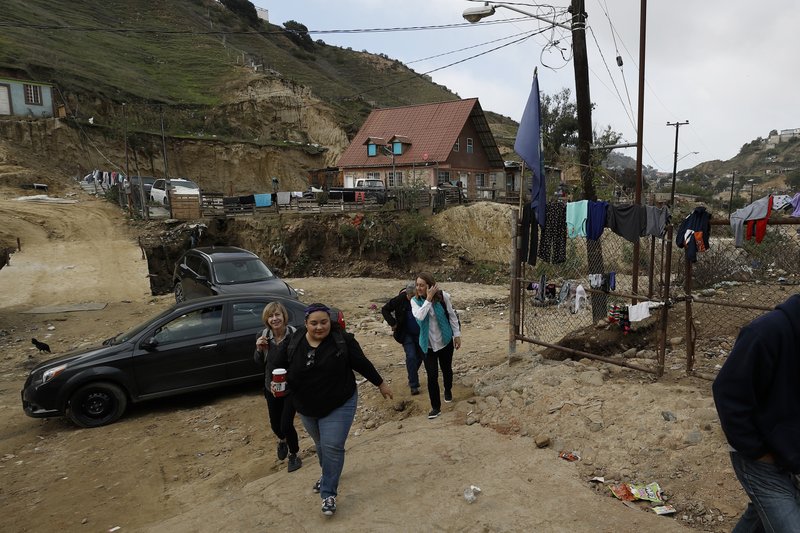TIJUANA, Mexico -- When a Honduran boy complained of a toothache, Dr. Psyche Calderon asked the obvious question: "When did the pain start?"
The answer broke her heart.
"When La Mara broke all my teeth and killed all my family," the 14-year-old said.
He said little else about the attack by the infamous Central American gang, La Mara Salvatrucha. Just: "I was the only one that survived."
[Video not showing up above? Click here to watch » https://www.youtube.com/watch?v=BmOlyMckGx0]
Calderon is not a therapist, nor a lawyer or a dentist. She is a general practitioner volunteering to provide care for Central Americans stuck in Mexico while they try to obtain asylum in the United States. There was little she could do for this teenager.
"So I gave him an antibiotic, then went home and cried," she said.
Calderon is part of a movement of health professionals and medical students from both sides of the U.S.-Mexico border that is quietly battling to keep asylum-seekers healthy and safe while their lives are in flux.
They try to tend to a need left largely unmet by the governments of both countries. It has thrust volunteer doctors into new and unusual roles where they often have to improvise while working with limited donated medications and equipment and dealing with nonmedical issues. Besides giving patients a pill for pain relief, the doctors might need to direct them to legal help for their cases while offering a listening ear as a kind of therapist to a population suffering deep trauma from violence that forced them to flee their homelands.
[Gallery not loading above? Click here for more photos » arkansasonline.com/1219volunteers/]
With little training or preparation for this type of medical work, doctors like Calderon are trying to come up with guidelines to better treat migrants with emotional trauma.
Tens of thousands of people are stuck in Mexican border cities as their asylum cases wind their way through the U.S. court system under a Trump administration policy that returns them across the border to wait out a decision. Thousands of others wait for their numbers to be called so they can start their claim in a process that meters the number of asylum requests that are submitted to U.S. officials.
Along the U.S.-Mexico border, thousands are living in crowded shelters or outside in makeshift tents.
In Tijuana, volunteers like Calderon have been setting up weekend, pop-up clinics at shelters rarely visited by Mexico's public health doctors.
"I shouldn't be doing this," said the 34-year-old Tijuana doctor whose private practice caters to uninsured Americans. "They need to be in another place to be safe. That other place should be taking care of them, or the Mexican government should be taking care of these refugees."
She helps run the Refugee Health Alliance, one of a handful of such groups along the 1,954-mile border.
In the past year, the Refugee Health Alliance has hosted 800 volunteers who have seen more than 9,000 patients
Calderon works between the church where she sees mostly Central Americans and a neighboring cluster of rooms housing several dozen Haitians.
Eight months have passed since the day she saw the boy with the broken teeth. She still thinks of him. She never saw him again.
The experience made her a better doctor, she said. Now when Calderon asks about their pain, she treads carefully: A hurt neck, might be from getting a head smashed in by thieves..
"When you see someone who comes to you with insomnia, with no hope, it's really hard on us, too. What do we say? What do we treat? Is this an illness?" she asks. "That's why we're trying to write the protocol for mental health, and trying to get experts for refugee medicine to help us out with these questions."
Information for this article was contributed by Sharon Cohen and Nomaan Merchant of The Associated Press.
A Section on 12/19/2019
